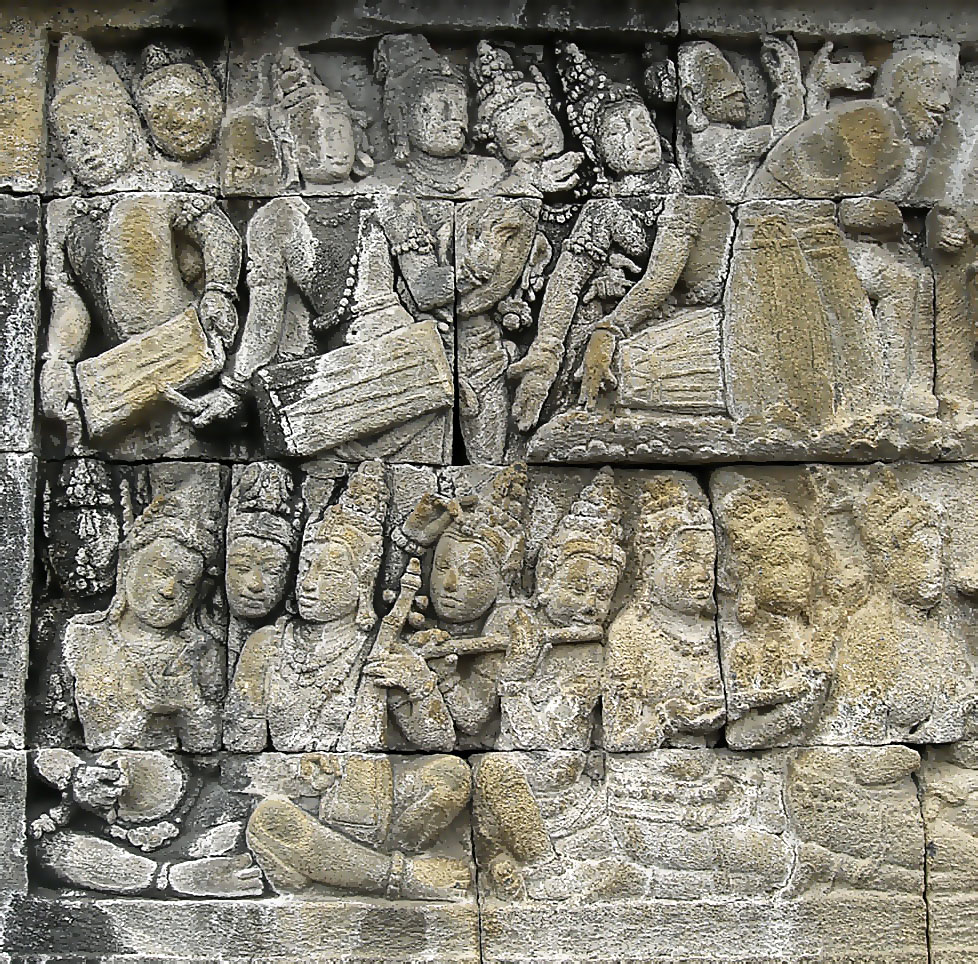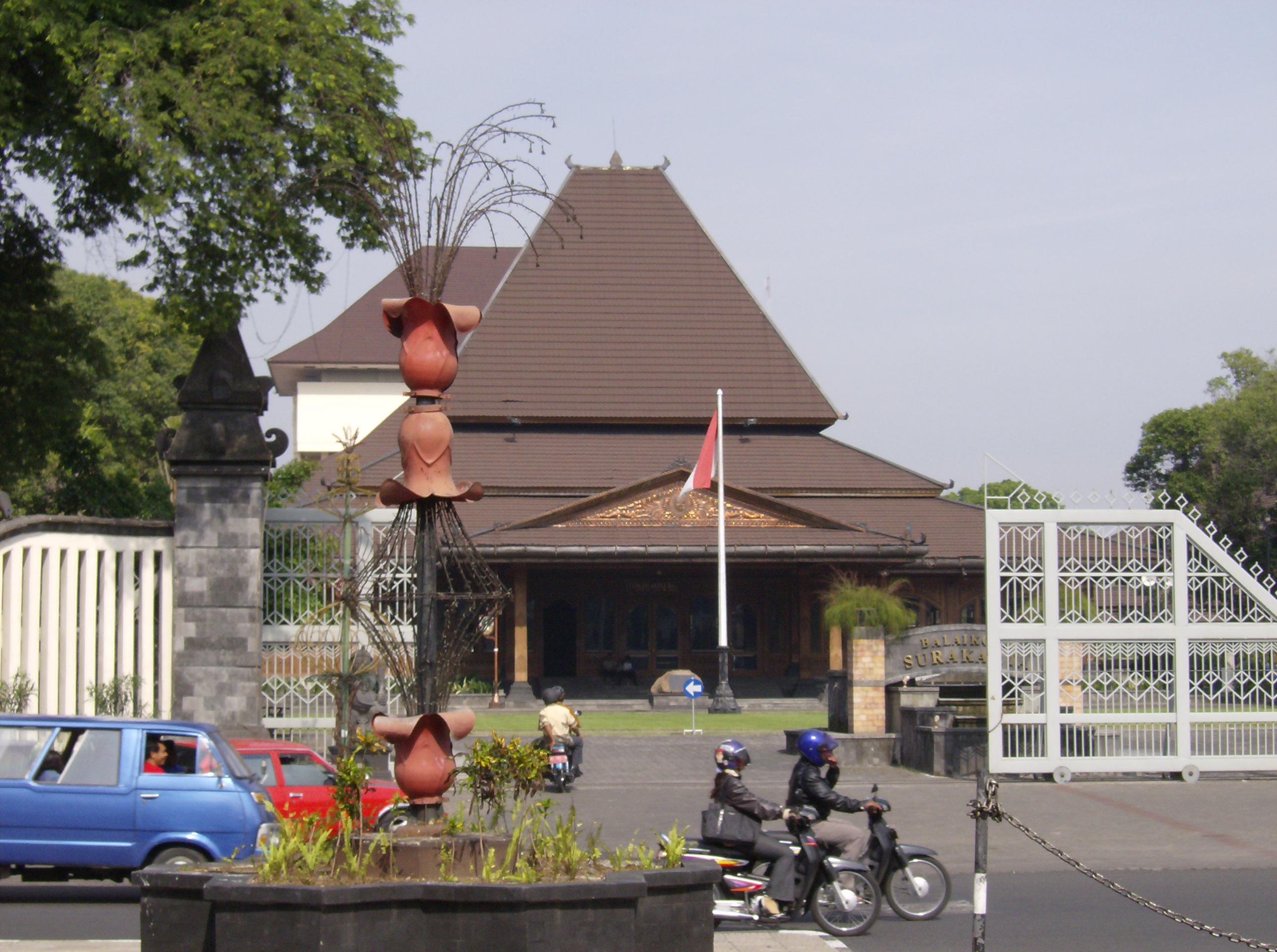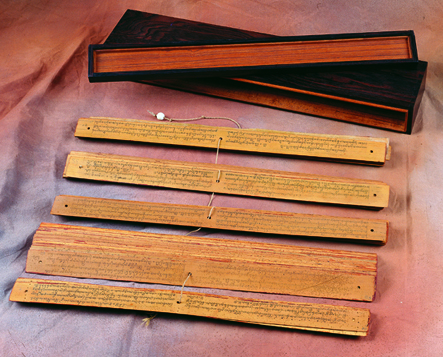|
Langgam Jawa
Langgam jawa is a regional form of Indonesian kroncong music most often associated with the city of Surakarta (Solo). As is the case with traditional kroncong music, langgam jawa utilizes a variety of non-native instruments, such as the flute, guitar, ukulele, cello and violin. However, these instruments are performed using a seven-tone Javanese gamelan scale known as pelog. The cello typically plays the role of a gamelan ciblon drum, with the performer slowly plucking or slapping the strings in a percussive fashion. Langgam jawa's roots can be traced back to kroncong ensembles going back to the 1920s, but emerged as a style of its own in the 1950s. Among the leading exponents of the style is Andjar Any. He and his ensemble, Orkes Kroncong Bintang Nusantara, are said to have composed over 2000 songs in the langgam jawa style. See also * Gamelan * Kroncong * Music of Java * Music of Indonesia Indonesia is a country with many different tribes and ethnic groups, and its mus ... [...More Info...] [...Related Items...] OR: [Wikipedia] [Google] [Baidu] |
Kroncong
Kroncong (pronounced "kronchong"; , ) is the name of a ukulele-like instrument and an Indonesian musical style that typically makes use of the kroncong (the sound ' comes from this instrument, so the music is called ''kroncong''). A ''kroncong'' orchestra or ensemble traditionally consists of a flute, a violin, at least one, but usually a pair of ''kroncongs'', a cello in Pizzicato, Pizzicato style, string bass in pizzicato style, and a vocalist. ''Kroncong'' originated as an adaptation of a Portuguese musical tradition, brought by sailors to Indonesian port cities in the 16th century. By the late 19th century, ''kroncong'' reached popular music status throughout the Indonesian archipelago. Characteristics The name "Kroncong" may be derived from the jingling sound of the ''kerincing rebana'', as heard in the rhythmic background of the music created by the interlocking of instruments playing on or off beat. This background rhythm runs faster than the often slow vocals or melody, a ... [...More Info...] [...Related Items...] OR: [Wikipedia] [Google] [Baidu] |
Ciblon
A ''kendang'' or ''gendang'' (, , , Tausug/Bajau/Maranao: ''gandang'', Bugis: ''gendrang'' and Makassar: ''gandrang'' or ''ganrang'') is a two-headed drum used by people from the Indonesian Archipelago. The kendang is one of the primary instruments used in the gamelan ensembles of Javanese, Sundanese, and Balinese music. It is also used in various Kulintang ensembles in Indonesia, Brunei, Malaysia, Singapore, and the Philippines. It is constructed in a variety of ways by different ethnic groups. It is related to the Indian double-headed mridangam drum. Overview The typical double-sided membrane drums are known throughout Maritime Southeast Asia and India. One of the oldest image of kendang can be found in ancient temples in Indonesia, especially the ninth century Borobudur and Prambanan temple. Among the Javanese, Sundanese, and Balinese, the has one side larger than the other, with the larger, lower-pitched side usually placed to the right, and are usually placed on ... [...More Info...] [...Related Items...] OR: [Wikipedia] [Google] [Baidu] |
Indonesian Styles Of Music
Indonesian is anything of, from, or related to Indonesia, an archipelagic country in Southeast Asia. It may refer to: * Indonesians, citizens of Indonesia ** Native Indonesians, diverse groups of local inhabitants of the archipelago ** Indonesian women, overview of women's history and contemporary situations * Indonesian language (Indonesian: ''Bahasa Indonesia''), the official language of Indonesia ** Indonesian languages, overview of some of the 700 languages spoken in Indonesia ** Indonesian names, customs reflecting the multicultural and polyglot nature of Indonesia * Indonesian culture, a complex of indigenous customs and foreign influences ** Indonesian art, various artistic expressions and artworks in the archipelago ** Indonesian cinema, a struggling and developing industry ** Indonesian literature, literature from Indonesia and Southeast Asia with shared language roots ** Indonesian music, hundreds of forms of traditional and contemporary music ** Indonesian philosophy, ... [...More Info...] [...Related Items...] OR: [Wikipedia] [Google] [Baidu] |
Music Of Indonesia
Indonesia is a country with many different tribes and ethnic groups, and its music is also very diverse, coming in hundreds of different forms and styles. Every region has its own culture and art, and as a result traditional music from area to area also uniquely differs from one another. For example, each traditional type of music is often accompanied by its very own dance and theatre. Contemporary music scene have also been heavily shaped by various foreign influences, such as America, Britain, Japan, Korea, and India. The music of Java, Sumatra, Bali, Flores (Lesser Sunda Islands) and other islands have been well documented and recorded, and further research by Indonesian and international scholars is also ongoing. The music in Indonesia predates historical records, various Native Indonesian tribes often incorporate chants and songs accompanied with musical instruments in their rituals. The contemporary music of Indonesia today is also popular amongst neighbouring countries ... [...More Info...] [...Related Items...] OR: [Wikipedia] [Google] [Baidu] |
Music Of Java
The Music of Java embraces a wide variety of styles, both traditional and contemporary, reflecting the diversity of the island and its lengthy history. Apart from traditional forms that maintain connections to musical styles many centuries old, there are also many unique styles and conventions which combine elements from many other regional influences, including those of neighbouring Asian cultures and European colonial forms. Gamelan The gamelan orchestra, based on metallic idiophones and drums, is perhaps the form which is most readily identified as being distinctly "Javanese" by outsiders. In various forms, it is ubiquitous to Southeast Asia. In Java, the full gamelan also adds a bowed string instrument (the rebab, a name illustrative of Islamic influence), plucked siter, vertical flute suling and voices. The rebab is one of the main melodic instruments of the ensemble, together with the metallophone gendér; these and the kendang drums are often played by the most experi ... [...More Info...] [...Related Items...] OR: [Wikipedia] [Google] [Baidu] |
Kroncong
Kroncong (pronounced "kronchong"; , ) is the name of a ukulele-like instrument and an Indonesian musical style that typically makes use of the kroncong (the sound ' comes from this instrument, so the music is called ''kroncong''). A ''kroncong'' orchestra or ensemble traditionally consists of a flute, a violin, at least one, but usually a pair of ''kroncongs'', a cello in Pizzicato, Pizzicato style, string bass in pizzicato style, and a vocalist. ''Kroncong'' originated as an adaptation of a Portuguese musical tradition, brought by sailors to Indonesian port cities in the 16th century. By the late 19th century, ''kroncong'' reached popular music status throughout the Indonesian archipelago. Characteristics The name "Kroncong" may be derived from the jingling sound of the ''kerincing rebana'', as heard in the rhythmic background of the music created by the interlocking of instruments playing on or off beat. This background rhythm runs faster than the often slow vocals or melody, a ... [...More Info...] [...Related Items...] OR: [Wikipedia] [Google] [Baidu] |
Gamelan
Gamelan (; ; , ; ) is the traditional musical ensemble, ensemble music of the Javanese people, Javanese, Sundanese people, Sundanese, and Balinese people, Balinese peoples of Indonesia, made up predominantly of percussion instrument, percussive instruments. The most common instruments used are metallophones (played with mallets) and a set of hand-drums called ''kendang'', which keep the beat (music), beat. The ''kemanak'', a banana-shaped idiophone, and the ''gangsa'', another metallophone, are also commonly used gamelan Musical instrument, instruments on Bali. Other notable instruments include xylophones, bamboo flutes (similar to the Indian ''bansuri''), a bowed string instrument called a ''rebab'' (somewhat similar to the ''gadulka'' of Bulgaria), and a zither-like instrument called a ''siter'', used in Javanese gamelan. Additionally, vocalists may be featured, being referred to as ''sindhen'' for females or ''gerong'' for males.Sumarsam (1998)''Introduction to Javanese ... [...More Info...] [...Related Items...] OR: [Wikipedia] [Google] [Baidu] |
Pelog
Pelog (, , ) is one of the essential tuning systems used in gamelan instruments that has a heptatonic scale. The other, older, scale commonly used is called ''slendro''. ''Pelog'' has seven notes, but many gamelan ensembles only have keys for five of the pitches. Even in ensembles that have all seven notes, many pieces only use a subset of five notes, sometimes the additional 4th tone is also used in a piece like western accidentals. Etymology Pelog is a Javanese term for one of the scales in gamelan. In Javanese, the term is said to be a variant of the word ''pelag'' meaning "fine" or "beautiful". Tuning Since the tuning varies so widely from island to island, village to village, and even among ''gamelan'', it is difficult to characterize in terms of intervals. One rough approximation expresses the seven pitches of Central Javanese ''pelog'' as a subset of 9-tone equal temperament. An analysis of 27 Central Javanese gamelans by Surjodiningrat (1972) revealed a statistical p ... [...More Info...] [...Related Items...] OR: [Wikipedia] [Google] [Baidu] |
Surakarta
Surakarta (Javanese script, Javanese: , Pegon script, Pegon: ), known colloquially as Solo (Javanese script, Javanese: ; ), is a major List of regencies and cities of Indonesia, city in Central Java, Indonesia. The city adjoins Karanganyar Regency and Boyolali Regency to the north, Karanganyar Regency and Sukoharjo Regency to the east and west, and Sukoharjo Regency to the south. On the eastern side of Solo lies Solo River (Bengawan Solo). Its metropolitan area, consisting of Surakarta City and the surrounding six regencies ("Greater Solo Area", formerly Special Region of Surakarta), was home to 6,837,753 inhabitants according to the official estimates for mid 2023, 526,870 of whom reside in the city proper. Surakarta is the birthplace of the President of Indonesia from 2014 to 2024, Joko Widodo, as well as his son and current Vice President of Indonesia, Gibran Rakabuming Raka. The former served as Mayor of Surakarta from 2005 to 2012, as did the latter from 2021 to 2024. His ... [...More Info...] [...Related Items...] OR: [Wikipedia] [Google] [Baidu] |
Gamelan
Gamelan (; ; , ; ) is the traditional musical ensemble, ensemble music of the Javanese people, Javanese, Sundanese people, Sundanese, and Balinese people, Balinese peoples of Indonesia, made up predominantly of percussion instrument, percussive instruments. The most common instruments used are metallophones (played with mallets) and a set of hand-drums called ''kendang'', which keep the beat (music), beat. The ''kemanak'', a banana-shaped idiophone, and the ''gangsa'', another metallophone, are also commonly used gamelan Musical instrument, instruments on Bali. Other notable instruments include xylophones, bamboo flutes (similar to the Indian ''bansuri''), a bowed string instrument called a ''rebab'' (somewhat similar to the ''gadulka'' of Bulgaria), and a zither-like instrument called a ''siter'', used in Javanese gamelan. Additionally, vocalists may be featured, being referred to as ''sindhen'' for females or ''gerong'' for males.Sumarsam (1998)''Introduction to Javanese ... [...More Info...] [...Related Items...] OR: [Wikipedia] [Google] [Baidu] |
Java
Java is one of the Greater Sunda Islands in Indonesia. It is bordered by the Indian Ocean to the south and the Java Sea (a part of Pacific Ocean) to the north. With a population of 156.9 million people (including Madura) in mid 2024, projected to rise to 158 million at mid 2025, Java is the world's List of islands by population, most populous island, home to approximately 55.7% of the Demographics of Indonesia, Indonesian population (only approximately 44.3% of Indonesian population live outside Java). Indonesia's capital city, Jakarta, is on Java's northwestern coast. Many of the best known events in Indonesian history took place on Java. It was the centre of powerful Hindu-Buddhist empires, the Islamic sultanates, and the core of the colonial Dutch East Indies. Java was also the center of the History of Indonesia, Indonesian struggle for independence during the 1930s and 1940s. Java dominates Indonesia politically, economically and culturally. Four of Indonesia's eig ... [...More Info...] [...Related Items...] OR: [Wikipedia] [Google] [Baidu] |








